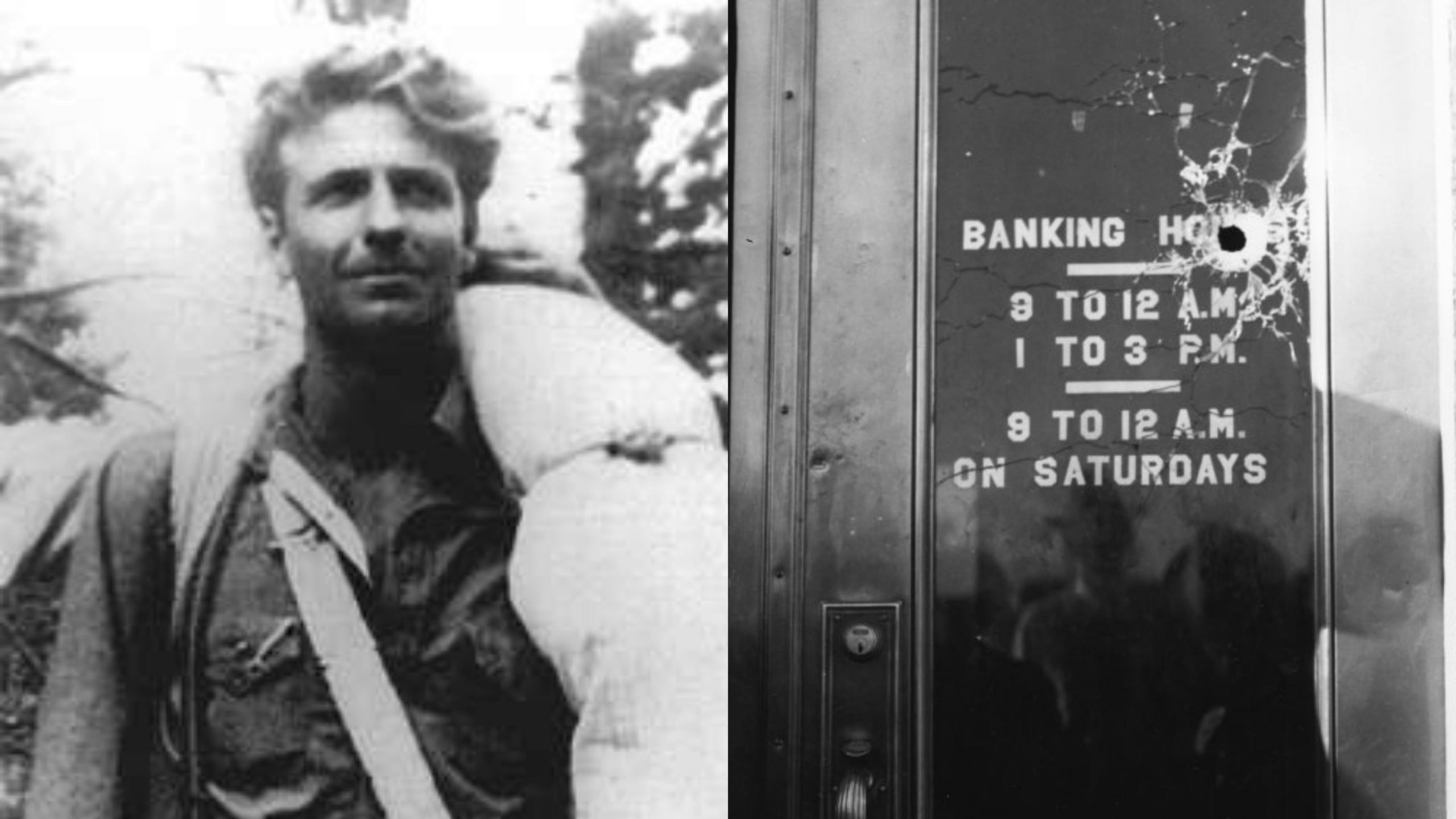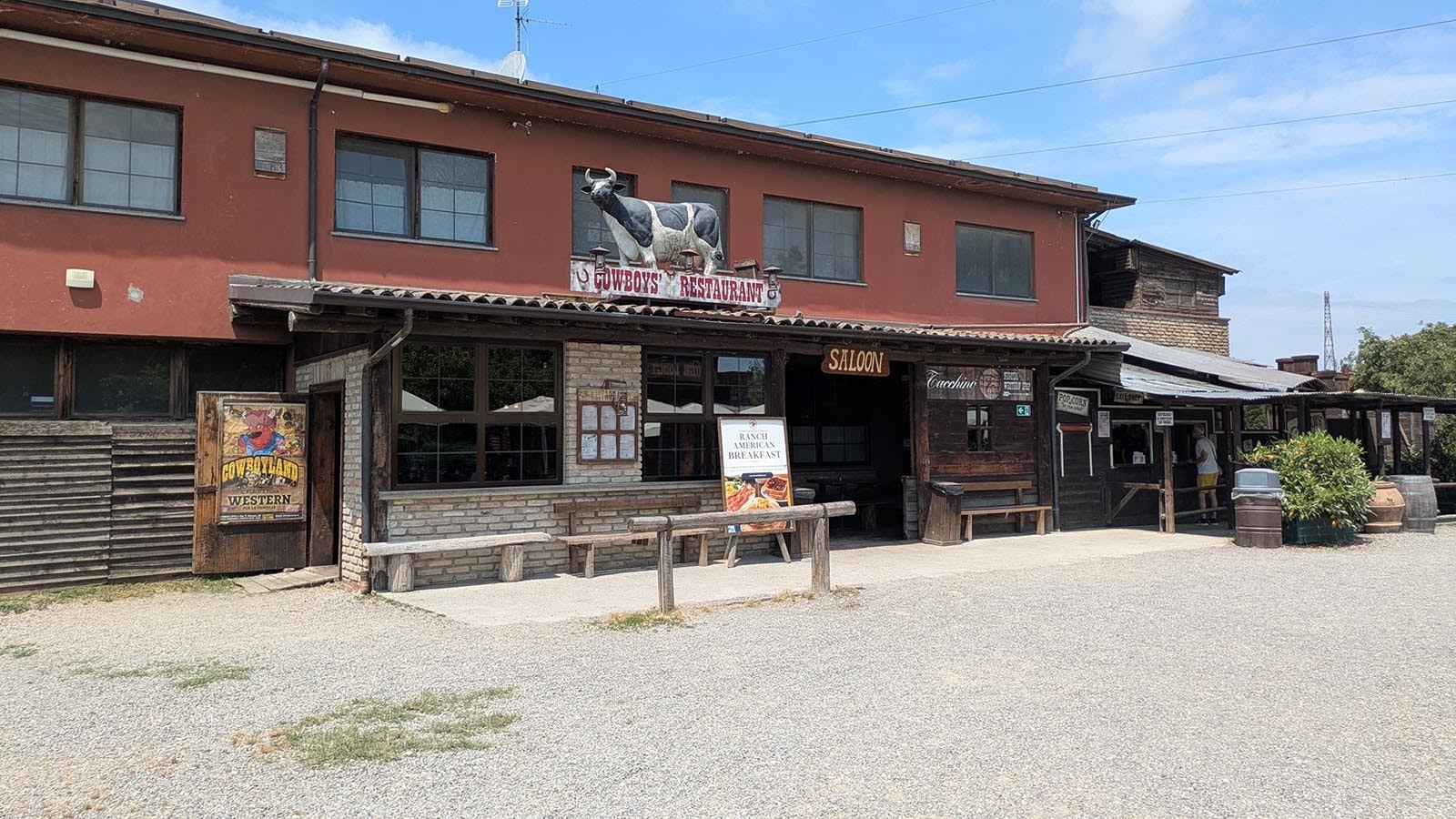It’s been 83 years as of Thursday, but the story of how 26-year-old Earl Durand was killed during an attempted bank robbery after an 11-day crime spree still holds a fascination for people interested in true crime dramas.
“Earl Durand was actually sort of an outlier in Western history,” said Brian Beauvais, archivist for Park County. “It was such a bloody event, but that sort of stuff didn’t occur as much as people sometimes think it did in the Wild West, but the story was so well documented at the time, we have so much evidence of what took place as it was occurring.”
Although Durand’s escapades were exaggerated and dramatized before his body was even cold, it’s undeniable that the handsome young criminal nicknamed “The Tarzan of the Tetons” went out on his own terms – and launched a legend that cast its shadow into the next century.
The showdown that occurred in Powell on March 24, 1939, was the culmination of life events that shaped an adventurous young man from Park County. Earl Durand was born to farmers who moved to Wyoming from Missouri shortly after their son’s birth in January of 1913.
As a child, Durand is said to have been a hard worker on his parents’ farm, but also a voracious reader. According to reports, he preferred books about history and adventure and read all the way through the Bible five times.
His physical presence was as impressive as his intellect. Fully grown, he stood at 6 feet, 2 inches tall, was blond and blue-eyed, and reportedly weighed 250 pounds — all muscle. He ran several miles every day – in fact, rumor had it he could run 40 miles in one night.
Quitting school after eighth grade, Durand began turning into the mountain man he would come to be known as. He left Powell on a saddle horse with the intention of riding to Mexico. Along the way, he was jailed without cause twice – once in Mexico, the other time in New Mexico.
When he was just 19, he moved to the Mojave desert and related later that he would have died crossing the desert had he not killed a wildcat… and eaten it raw.
Returning to Wyoming, Durand didn’t live in a house, choosing instead to reside in a wall tent on his parents’ property. He spent weeks at a time in the Absaroka mountains near Cody and Powell and became known as an expert hunter and trapper.
His skills as a marksman were legendary. Several accounts confirm that, using a rifle, Durand once shot through an airborne baseball four times before it hit the ground. When the rifle became too easy, he honed his skills using a bow and arrow.
All of Durand’s skills, which he could have put to use on the right side of the law, instead were used in the events that ultimately led to his death, as well as the deaths of two law enforcement officers in late March of 1939.
What started with an arrest for poaching became an 11-day manhunt for an escaped inmate and murderer involving a local posse of volunteers, the Montana National Guard and a young bystander who would wound Durand just a few minutes before the criminal took his own life.
Durand had eluded searchers who were intent on bringing him in after his escape from custody on poaching charges. During the manhunt, Durand had shot and killed two Powell law enforcement officers, Deputy Sheriff D.M. Baker and Town Marshal Chuck Lewis; as well as Meeteetse resident Arthur Argento and rodeo cowboy Orville Linaberry. A number of other men were wounded.
Seventeen-year-old Tipton Cox was playing hooky from school when he found out that Durand was in the process of robbing the nearby First National Bank.
Armed men surrounded the bank Durand tried to rob and a gunfight broke out as he appeared the bank’s window. It was Cox, armed with a rifle obtained from one of the men, who wounded Durand.
Once wounded, Durand retreated deeper into the bank, where he committed suicide.
Beauvais pointed out that although Durand undeniably committed terrible crimes at the end of his life, there are still people in Park County who believe he was a good man.
“Some people think that Earl Durand was a sort of Robin Hood, that gave poached meat to needy families, that he might have been justified in doing what he did,” Beauvais said. “But other people think that he was a stain on Wyoming. A lot of families in Powell, whose family members died from Earl Durand, are still pretty touchy about the topic.”
What stands out to Beauvais, as well, is the fact that the manhunt was played out in real time to newspaper readers and radio audiences.
“With the Earl Durand drama, we have this prolonged drama going on for a week, and news reports are appearing in the paper as they are happening, people are following along, ramping up excitement amongst Park County and the State of Wyoming, and then it all ends in a tragic scene,” he said.
The Earl Durand drama was big news around the country, as well. Books were written, movies were made, and the legend grew.
Eighty-three years later, the story of the “Tarzan of the Tetons” is a true-crime drama for the ages.





